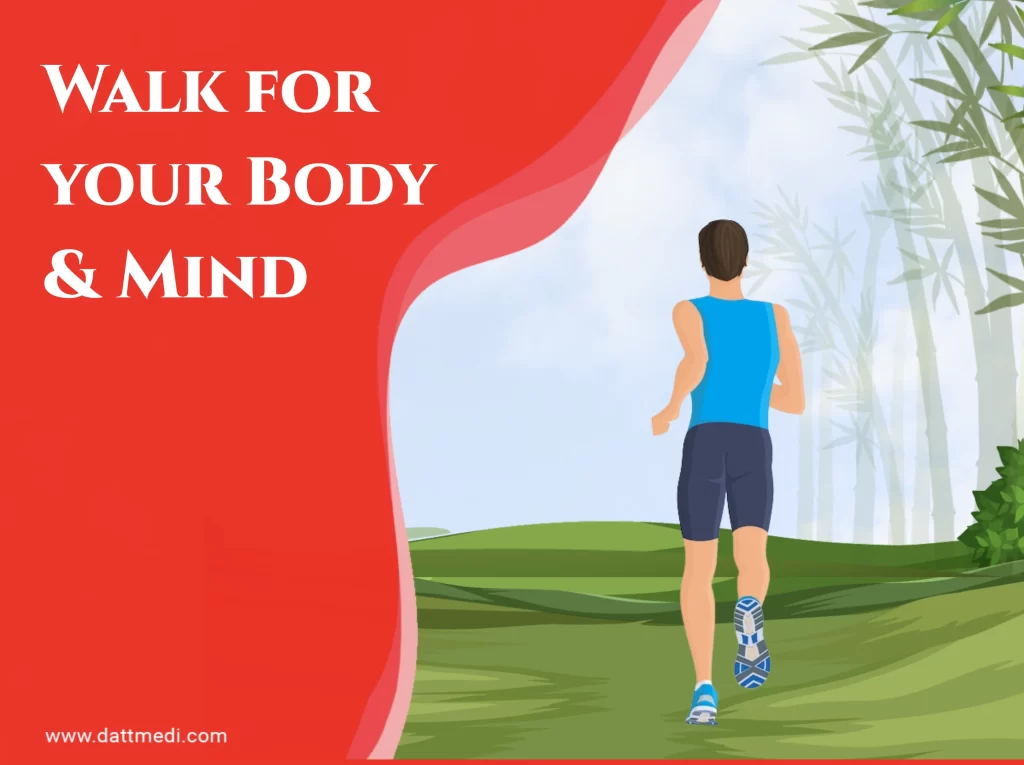
Do you suffer from blood pressure issues or joint pain? Have you tried 45 minutes daily walk? It might prove to be a proverbial apple for you by providing lots of incredible benefits and keeping the doctor away.
Walking might be an underrated form of exercise but it is one of the easiest and the best things you can do to your health. All you need is a pair of shoes and comfortable clothes.
WALKING HELPS BURNS CALORIES:
Walking helps burn calories and thereby reduces weight. However, the number of calories burned while walking depends upon body size, BMR (Basal Metabolic Rate), walking speed, etc.
WALKING IS GOOD FOR YOUR HEART:
As per a study published in the journal Circulation titled “Aerobic interval training vs. continuous moderate exercise as a treatment for the metabolic syndrome”, Walking helps to lower your blood pressure & cholesterol levels by regulating your metabolism. Walking not only helps to prevent the irregularities in metabolism but also helps to reverse the damage caused by it.
Another advantage of walking is that it protects you against cardiovascular diseases. This has been proved in people over 65 years of age who walk for at least 4 hours every week and has been published in the study in the Journal of American Geriatrics Society.
WALKING LIFTS YOUR MOOD:
Talking a walk in the fresh air can instantly lift your mood when you feel down or low in life. According to a study published in the Archives of Internal Medicine, taking a walk daily helps to improve depression in people on medications.
WALKING STRENGTHENS YOUR MUSCLES:
As we age, we experience muscles loss. Regular walking can prevent muscle loss by strengthening and toning the leg and back muscles. A person with a sedentary lifestyle or one who is always lying down will lose more muscles strength than compared to someone who goes for a regular walk.
WALKING STRENGTHENS YOUR BONES:
Similar to the muscles, bones also become as weak as you age. Regular walking prevents loss in bone density, thereby reduces the risk of osteoporosis, fracture, and injury. Healthier bones help improve your posture and stamina.
WALKING REDUCES THE RISK OF DIABETES:
Taking a brisk walk of no less than 5,000 steps daily helps control blood sugar levels, in turn, helps to prevent Type 2 Diabetes.
WALKING OFFERS AEROBIC BENEFITS:
Aerobic capacity is the ability of an individual to take in, transport, absorb and utilize oxygen. Walking makes us aerobically fit. Gradually your walking capacity will increase and you will be able to walk longer distances.
WAKING REDUCES STRESS:
Walking gives you time to relax and think. It helps to alleviate stress by decreasing the production of stress hormone in the brain and improving circulation.
WALKING BOOSTS IMMUNITY:
Walking is a great way to boost immune function. 30 minutes daily walk helps WBCs release at a faster rate, hence promotes quick healing.
Apart from these, there can be many other benefits of a daily walk. But it requires REGULARITY. You can start by setting an everyday goal and increasing it gradually as you achieve the previous one. Walking with a friend can make it enjoyable and you will feel even more relaxed. Don’t get disheartened by any missed days in between. Introspect and start again. Adding music can make it more enjoyable.
It’s not always a complicated workout which helps you lose weight. We, at Datt Mediproducts suggest that a simple brisk walk can help you live a happy and healthier life. Walking makes you more energetic and feel better.
Walk More & Sit Less!




